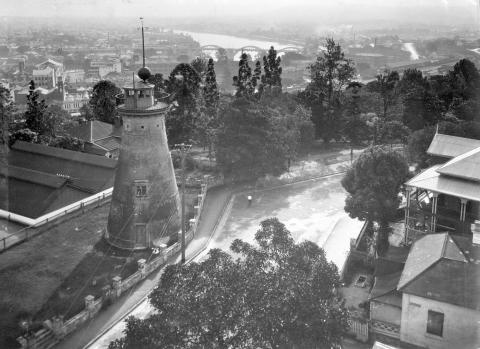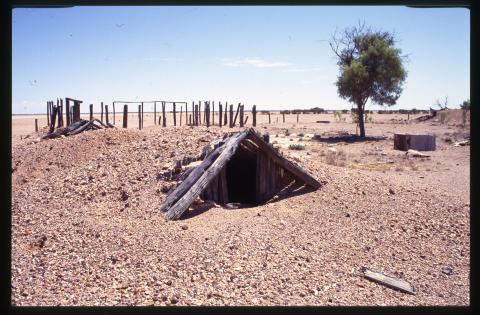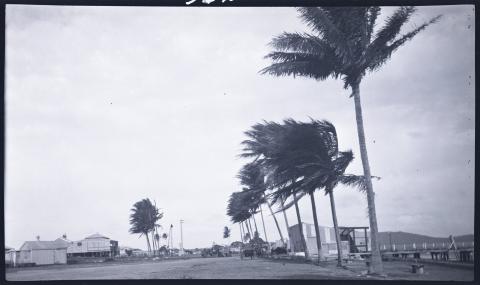
- News of the day
-
Sun, Wednesday 27 June 1951, page 5
Scene in Toowoomba Court
COURT SCENE. Nurse Lenora Margaret Lewis, 19, who was shot following a party at Toowoomba Mental Hospital, May 12, gave her evidence in the Toowoomba police court yesterday while lying on a stretcher. Kay McKay, 19, sitting at the table (centre foreground) with her counsel, Mr. A. E. Mason, on her right, was committed for trial on a charge of attempting to kill Miss Lewis. - Background
-
The main section of the Toowoomba Court House was erected between 1876 and 1878. At the time of its construction, the Colonial Architect responsible for the design of public buildings was F D G Stanley.
Toowoomba is the principal town on the Darling Downs which was first discovered by explorer Allan Cunningham in 1827. It was later settled by pastoralists in search of rich grazing land and by the 1840s, led by the Leslie brothers and John Campbell over twenty stations had been established. The first township which evolved to support these stations was Drayton, west of Toowoomba. Within ten years, the town had been established as a 'government town', with much support from the local squatters. As with other government buildings, the first court house on the Downs was constructed at Drayton.
However the success of Drayton did not last. The site now known as Toowoomba was eventually considered to be in a more suitable location for access down the range and in 1852, a town survey was secured.
The establishment of a new town was strongly supported by the squatters and Toowoomba challenged Brisbane as the new capital of Queensland. Although this status was not achieved, the town rapidly developed and by the 1860s had become the centre of pastoral development on the Downs.
Construction of the new Toowoomba law courts and public offices began in 1876. They replaced an earlier, smaller building, also located in Margaret Street, which was constructed in 1863. The new building was much larger than the previous one and of a more imposing design, indicative of the sense of prosperity and permanence felt by the town.
The building was erected in stages, the first of which was completed by 1878. The contractor for this section was J Gargett and the building was erected at a cost of £6 870. It was constructed of locally quarried cut stone from Highfields.
In 1913, a single storey building was erected at the rear of the site, for use as the Lands Office. It fronted Neil Street and adjoined the existing building. Although of a different stone, it was of a similar style to the original building, costing £1963-10 to erect.
Further additions were made to the site in 1943, including the addition of another storey to the 1913 building and two more two storeyed buildings behind the 1877 building. Of these, one was located at the eastern end of the existing building and attached to it, forming a 'U' shaped structure. The second building was freestanding and located in the centre of the 'U' shape. The additions were constructed at a cost of £28 799 and were designed by government architect R C Nowland.
In 1979, a substantial refurbishment was undertaken. The Court House is now used by a number of organisations, including the Police Department and the Department of Sport and Tourism. The interior layout bears little resemblance to the 1878 or 1943 layouts.



